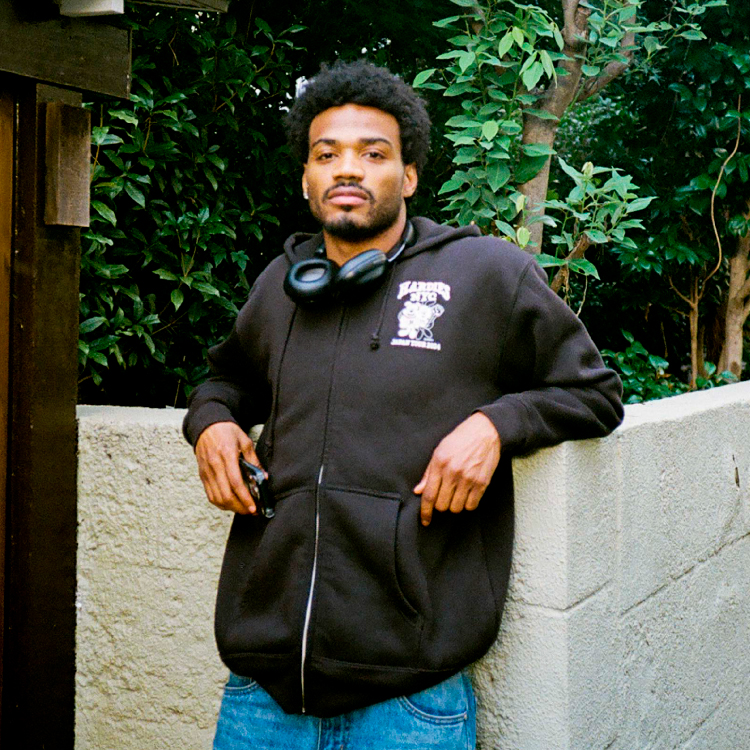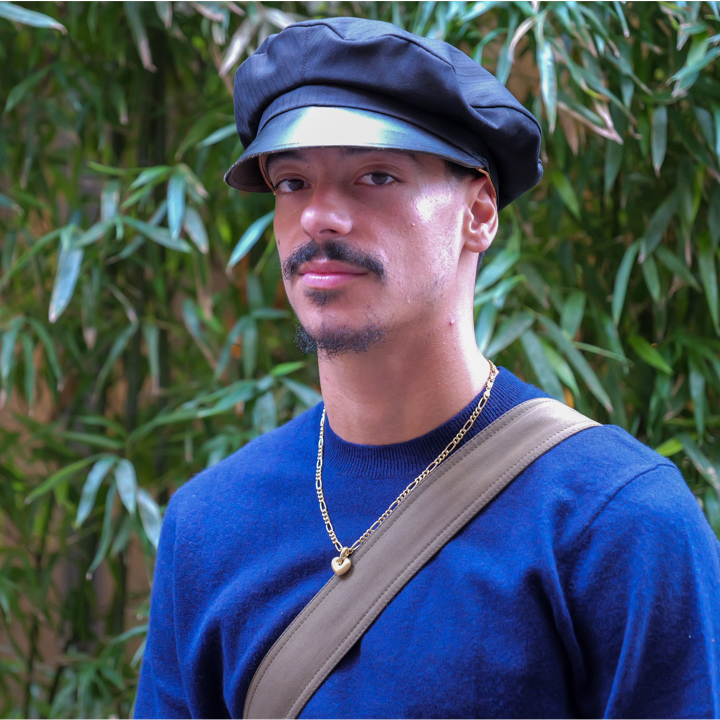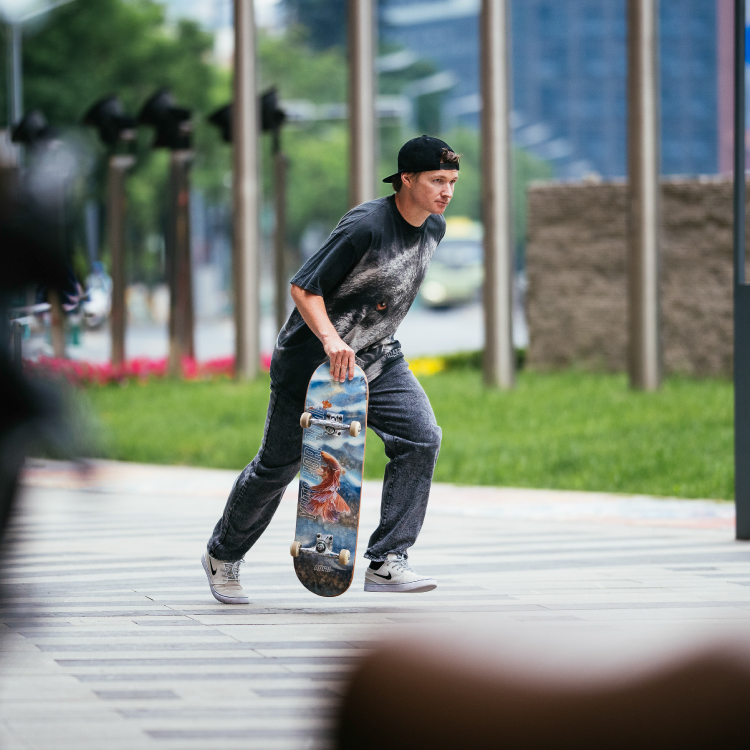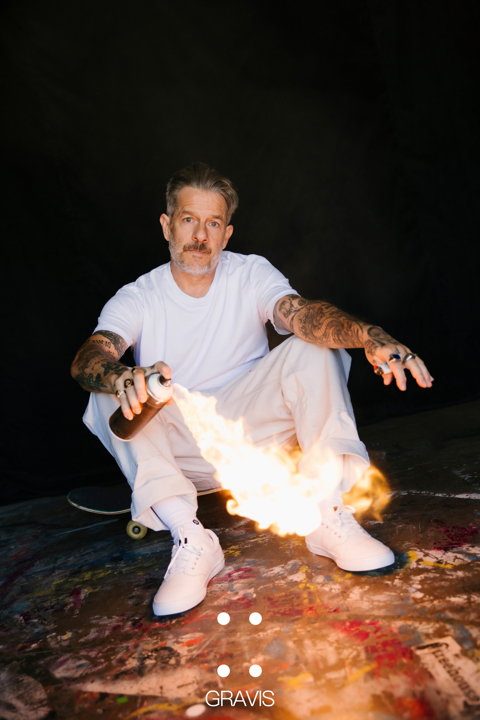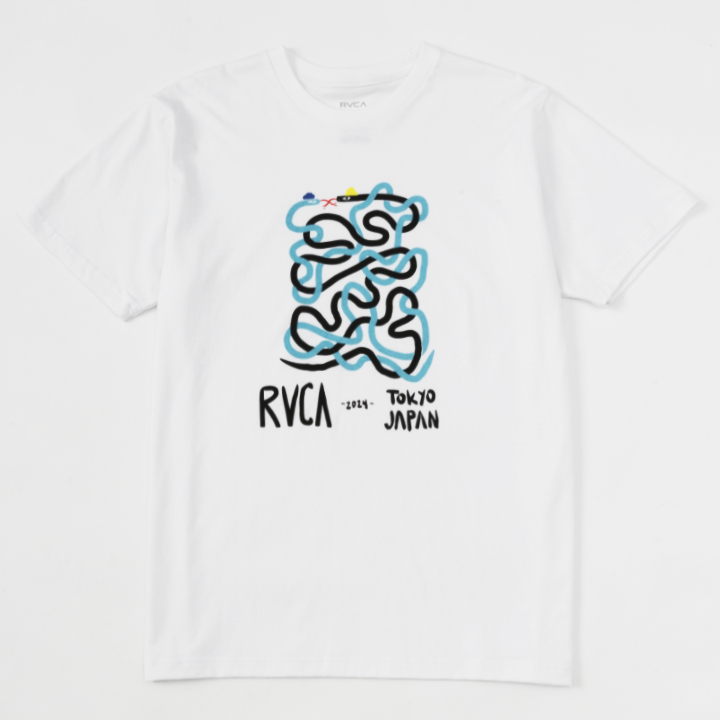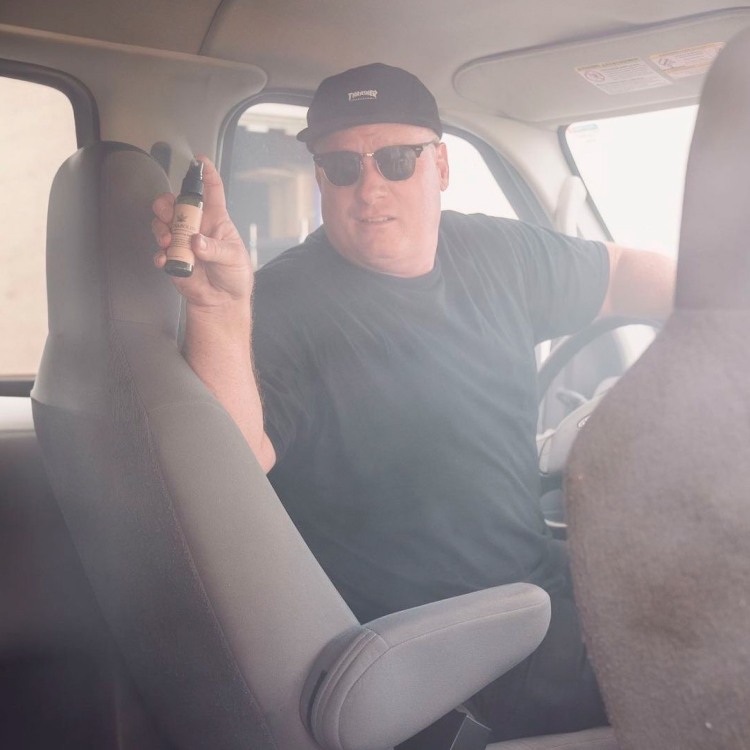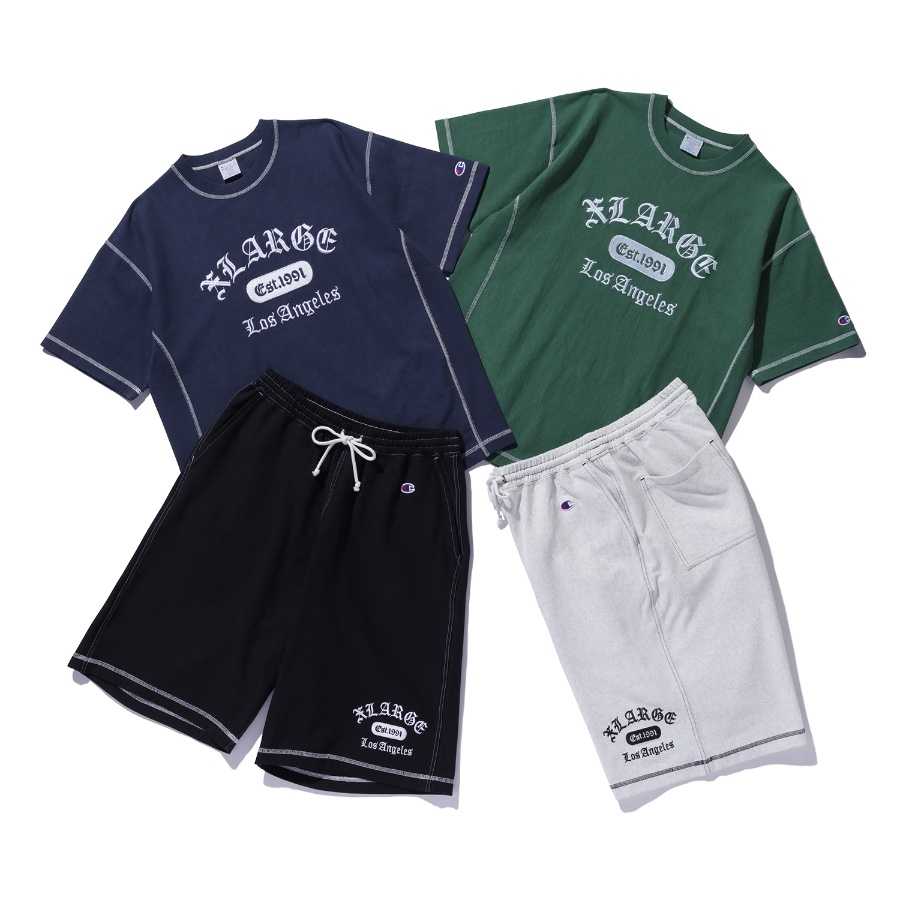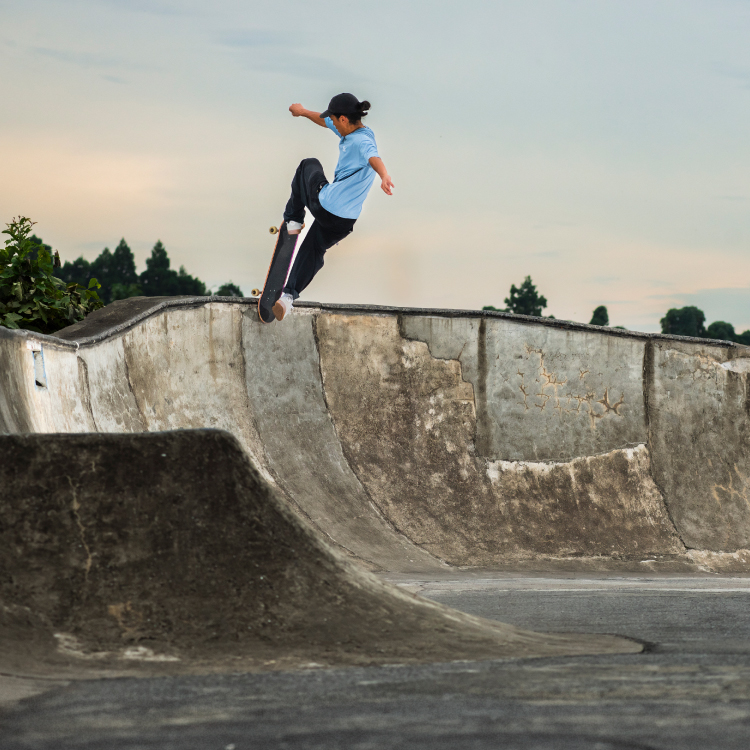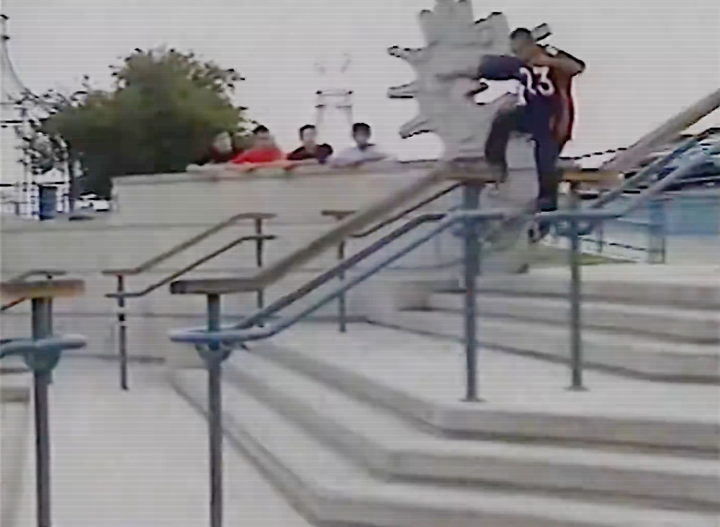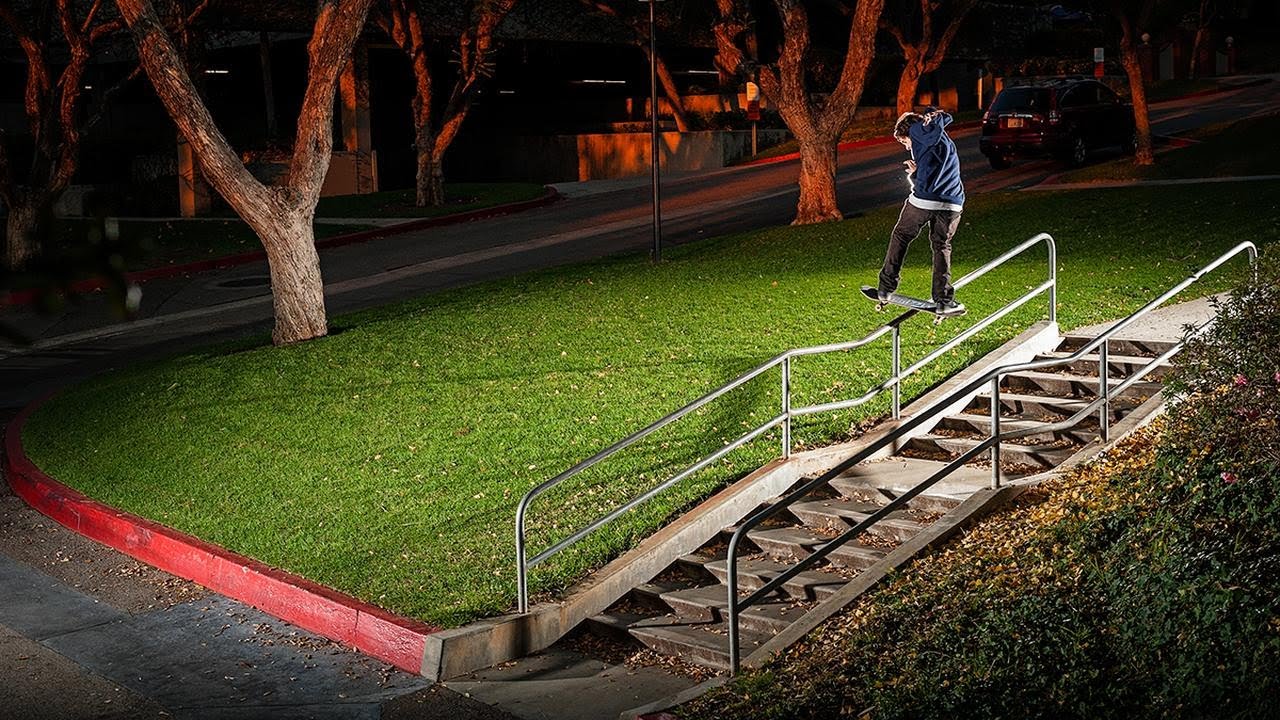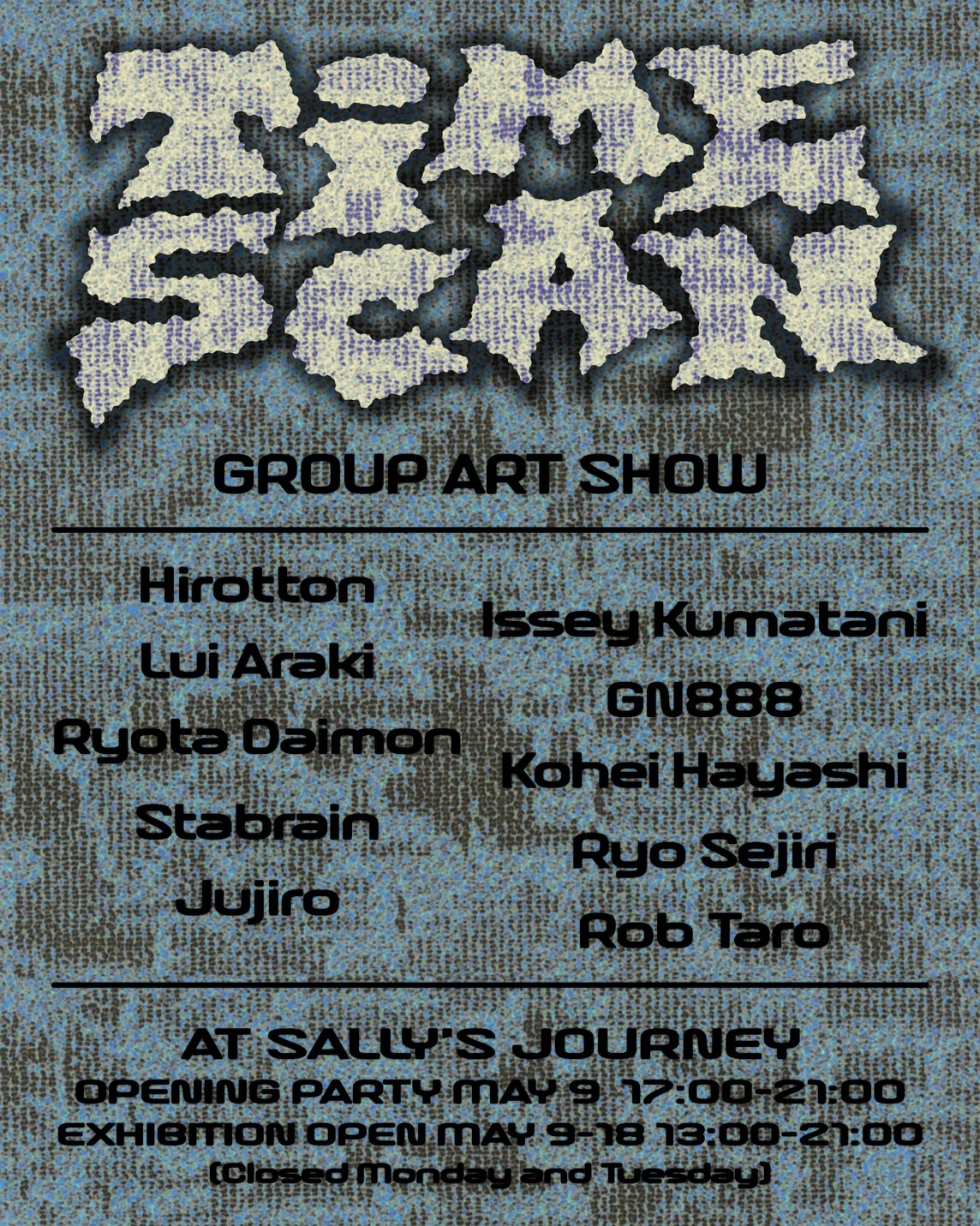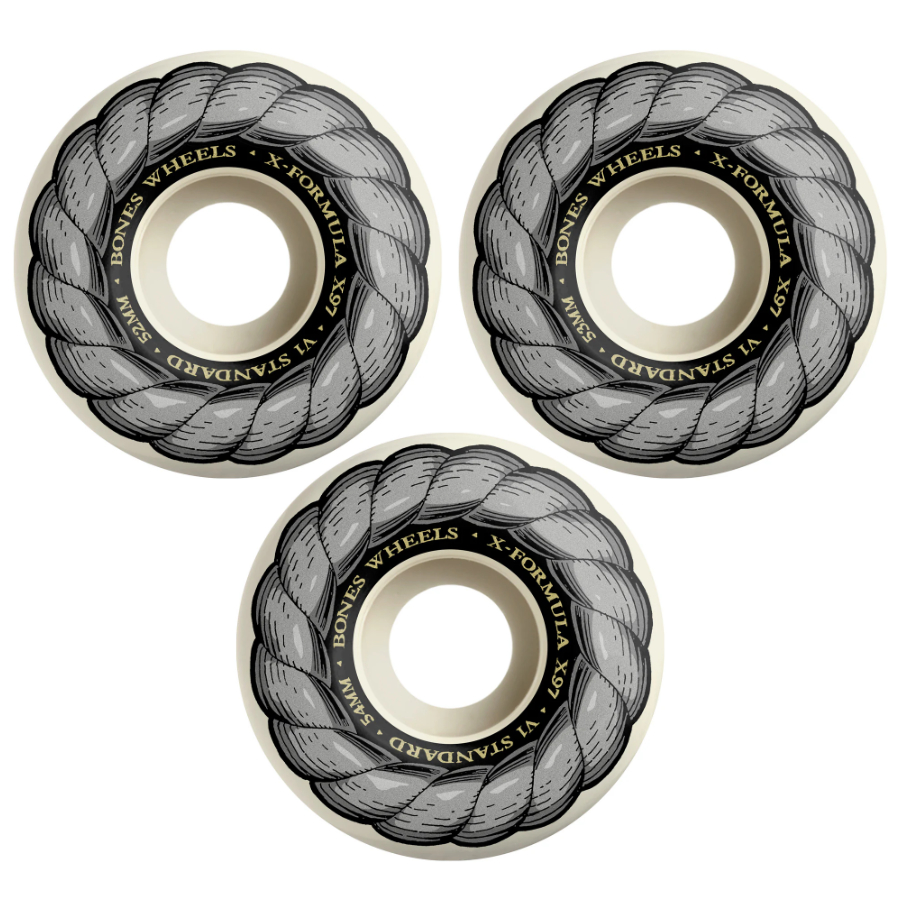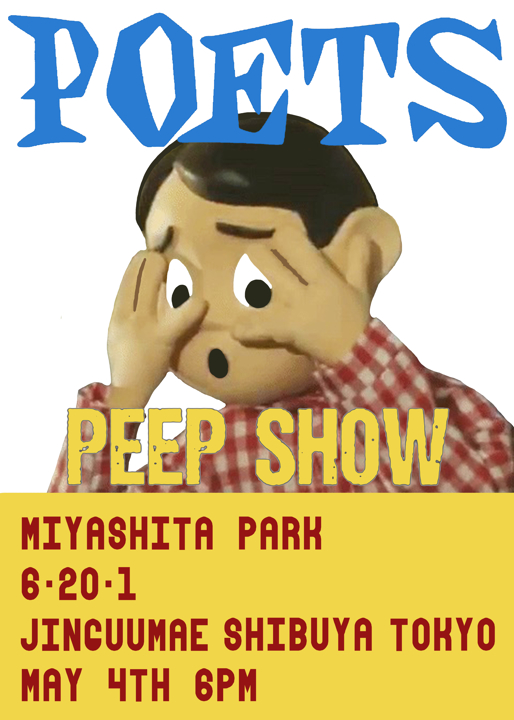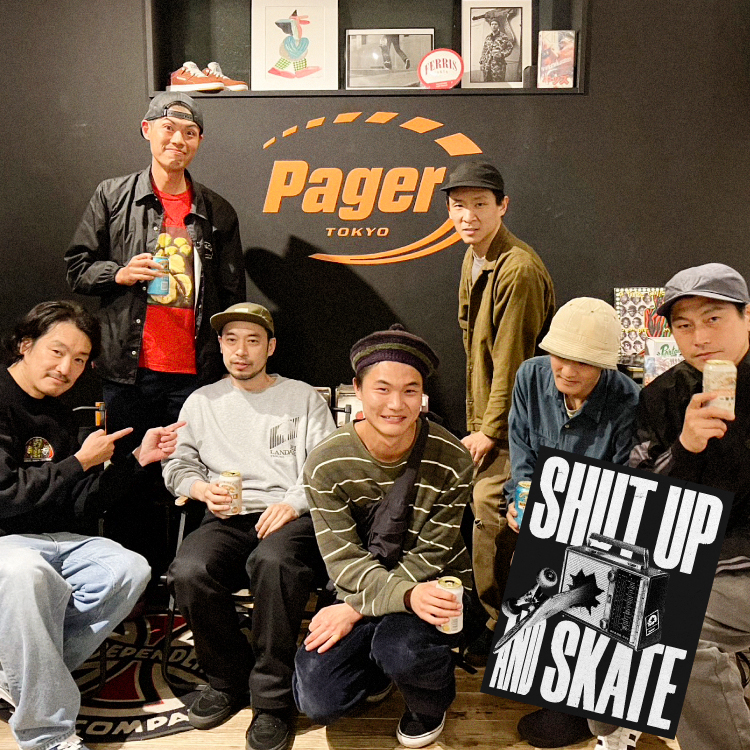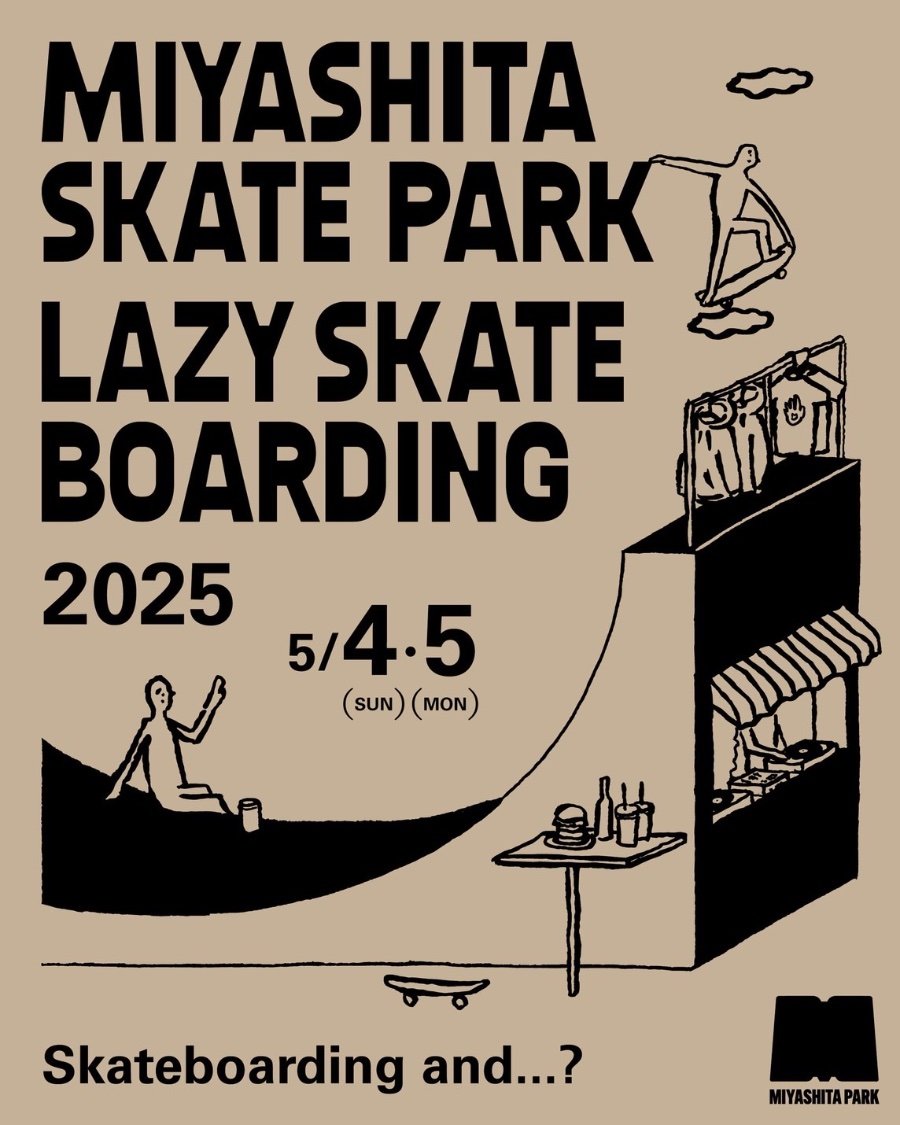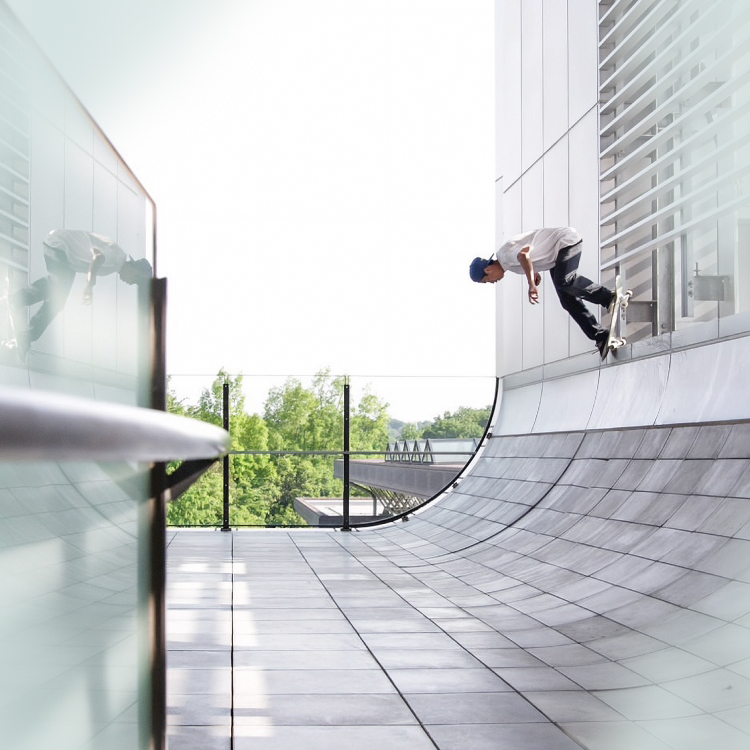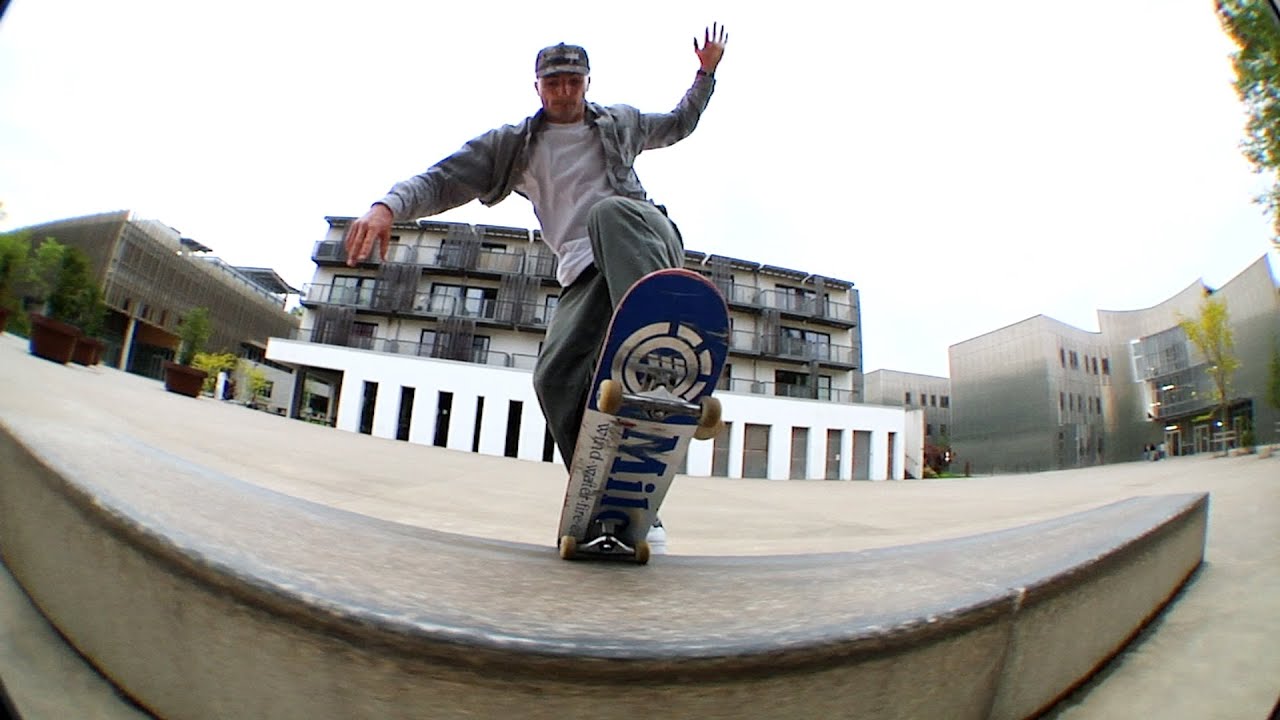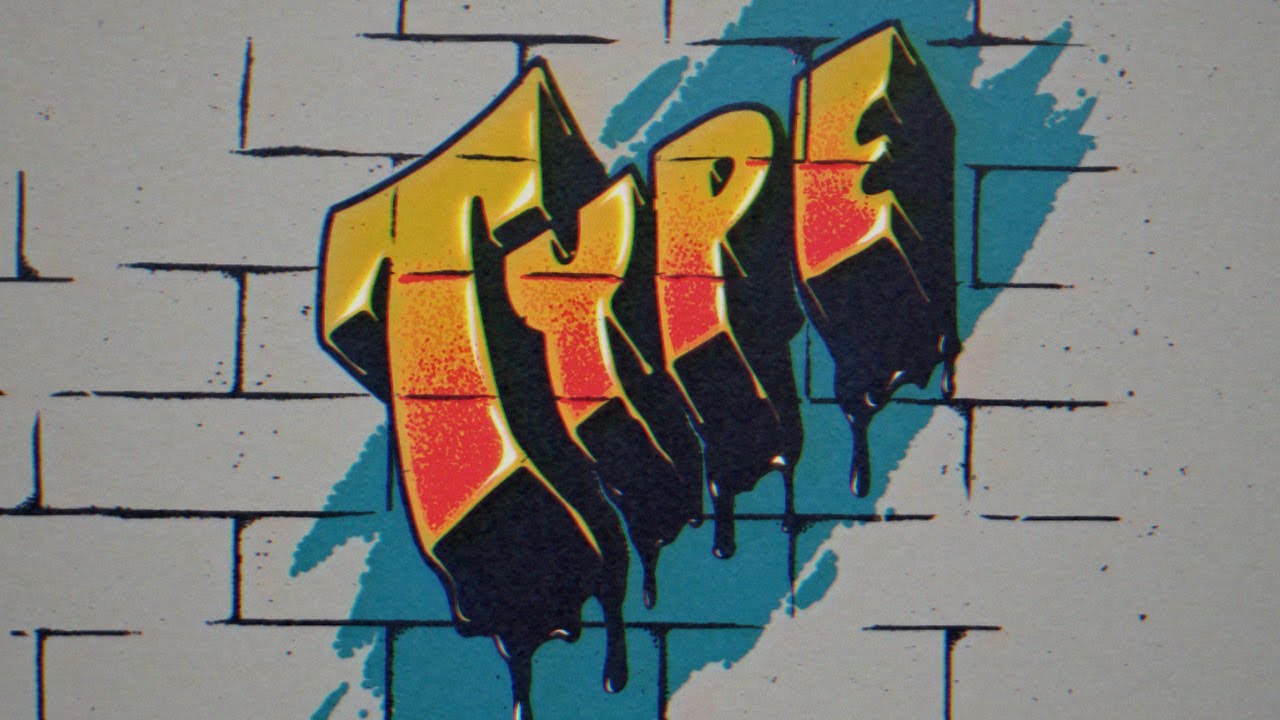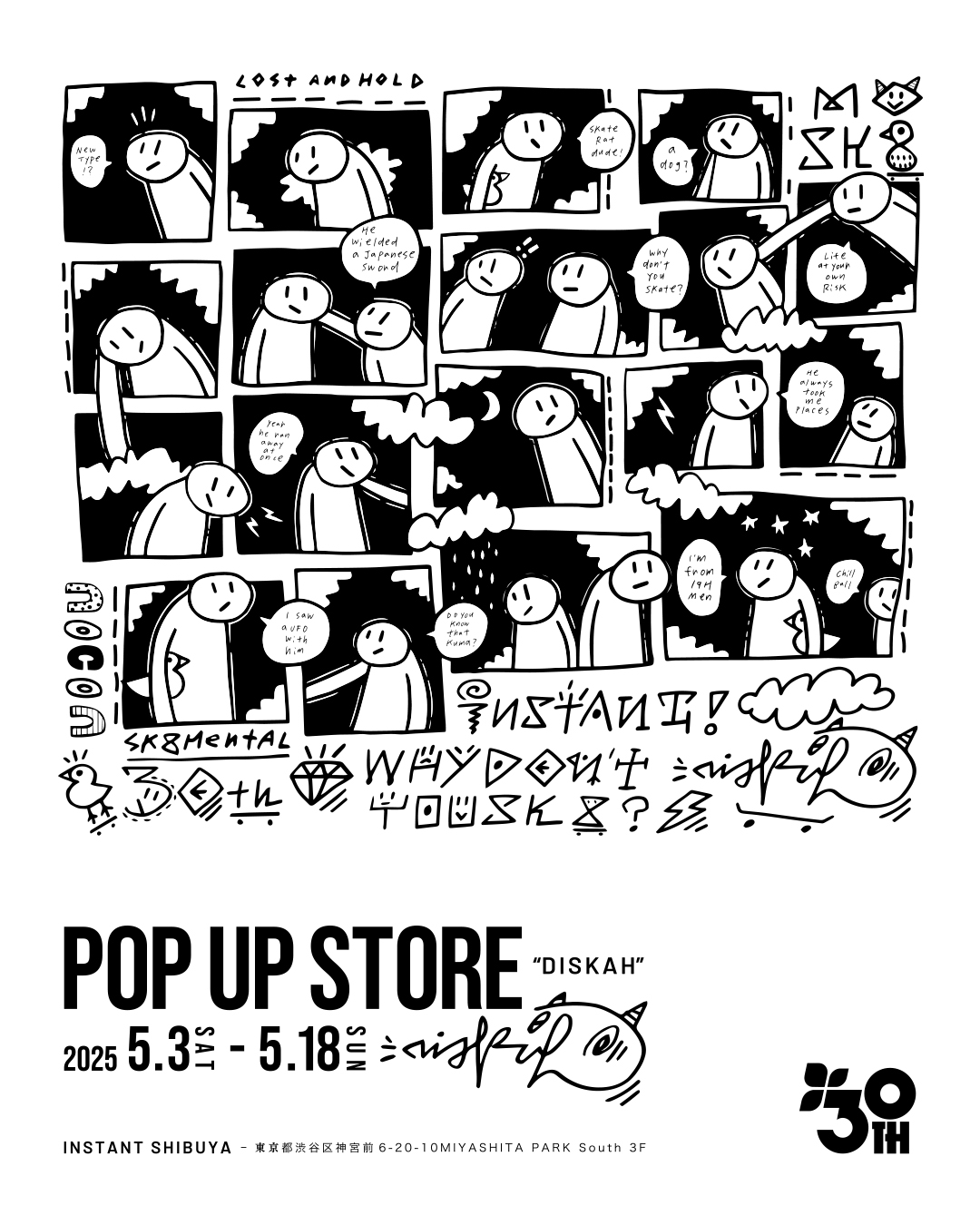The event "RVCA SKATE," where skateboarding, art, and food culture intersected, unfolded simultaneously across Shibuya. We spoke with Mark Oblow, who held an art show at the RVCA SHIBUYA GALLERY, about his creative work and becoming a father.
──MARK OBLOW (ENGLISH)
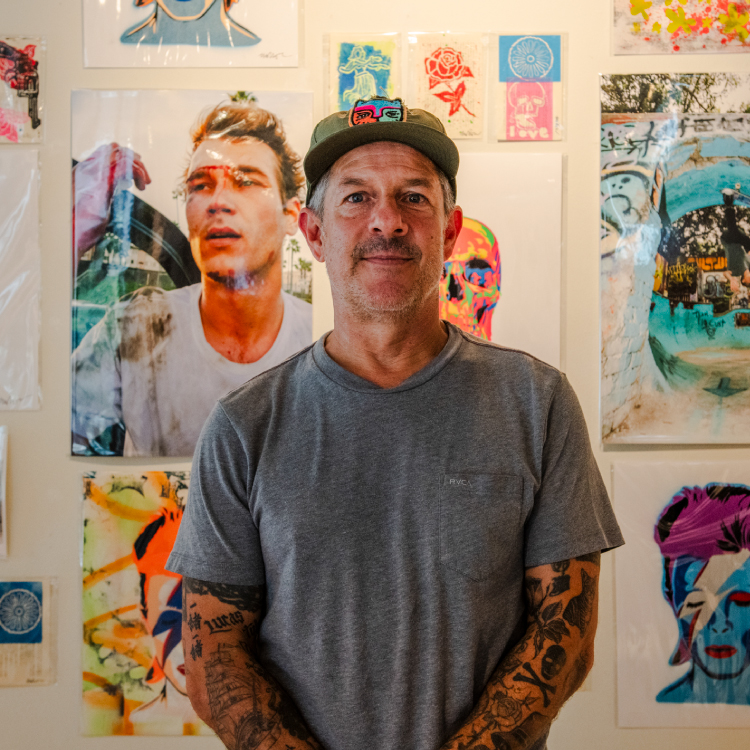
[ JAPANESE / ENGLISH ]
Photos_Waguri
Special thanks_RVCA Japan
VHSMAG (V): How did your relationship with RVCA start?
Mark Oblow (M): My relationship with RVCA actually took place a bit over seven years ago. The US RVCA brand hired me to become a part of the Artist Network Program, which was a mix of different artists from around the world. So it was kind of like a sponsorship for artists, which was different from what other brands were offering from being a part of the skate team or the surf team. There were never really brands that actually supported artists. So I became a part of the brand that way and recently, this past year in October, the brand was sold. My contract ended and I'm no longer a part of the Artist Network Program, but from being connected with Japan and my love for the country, and also coming here with RVCA doing events, I had a great relationship with RVCA Japan.
V: And you're here in Tokyo doing an event with RVCA Japan. How did this happen?
M: Kento had reached out to me and asked me if I would be interested in doing an event here this summer with RVCA Japan. It was a no brainer. I wanted to come and be here and see my friends, and then do an art show at the RVCA Gallery in Shibuya and be a part of this event.
V: You had various mediums at your art show. You had photos, prints, griptapes, boards, patches...
M: The thing with me and my art is, I continue to grow and add to my palette. From being a young kid and starting with drawing on my surfboards and drawing on my griptape, to then taking photography to then doing stencil work, then doing block prints, and it's continued to grow. And the last add in was during Covid, I started sewing patches and chain stitching. And that became a part of my thing. With prior shows that I've done, I've planned things for those shows on what I would show. But for this one, I decided to kind of show everything.
V: So this art show is kind of like your history of expression. What's the first inspiration for creating a new piece?
M: My inspiration usually comes from traveling, being out in the world and seeing things. And then being inspired by a piece of trash or a piece of art or a person, or a style or something that I see and it kind of gets in my head. And then I kind of go from there. I'm not really someone that pre-plans things. My things just come out as I'm making it.
V: Was there a certain emotion that you wanted to capture in your art show in Tokyo?
M: There's definite emotion. That comes with what I feel when I'm there or what I feel from the food that I'm eating, or the coffee or the people that I'm around. And then also for me, it's really a big expression of color, you know? I have parts of my photography that's black and white, but a lot of my artwork is color.
V: Color Skateboards. It sounds like you have come full circle since you started making art during that era. Do you have a memorable piece from the art show?
M: It's not so much the pieces for me, but my memories are the people that show up to the show. The best of Japan's artists showing up to my show was one of the best things for me, or seeing friends that I haven't seen for a long time, that I've known for decades, showing up to my show was the big thing for me. That's the things that stand out, you know? And then seeing how people look at the art and how they move through the room are the memories for me that are exciting.
V: You had a lot of photos from the '80s up until recent days. That tells your long history in skateboarding.
M: I have tons of art and I have tons of flat files stacked on each other in my garage. I just went through my files and pulled things that were good feelings and good memories to me, or also images that I thought would be interesting for people to see. There's stuff in the eighties of Christian Hosoi or Mark Gonzales. And then stuff of Dylan Rieder, Arto Saari, Omar Salazar and Stefan Janoski. That whole mix of people that have influenced me over my career and been part of my life. It's a good thing because having the old school Japan crew come in and see things that affect them, but then having the new generation of Japanese kids come in and they see things that affected them as well. I want to make good feelings in different people. I want to create a feeling. I want them to feel good when they see it, you know?


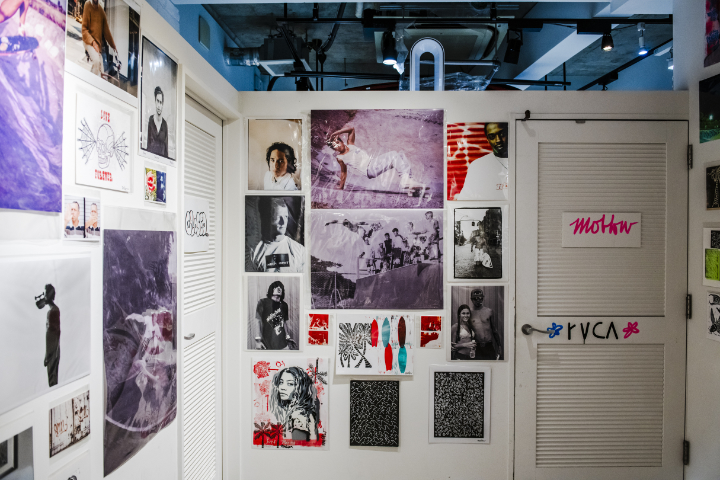



V: You were displaying blue boards and there was a photo of a sadplant in the middle.
M: That's Christian. I really loved the photo because the style of the sadplant was perfect. We were all skating that ramp, doing grinds or doing some lip tricks. And here's Christian coming in and he's able to do airs that are waist high, and he's doing a sadplant being completely stretched out to the most perfect position. And it's a ramp that is only three and a half feet. Christian was a skater that could skate anything at any time and be stylish. Dylan Rieder too, he could skate anything and look good. Those were the influences in skateboarding for me, where style was more important than the trick. Gonz was the same way where he can do something and look good no matter what he's doing. That's what I love about skateboarding.
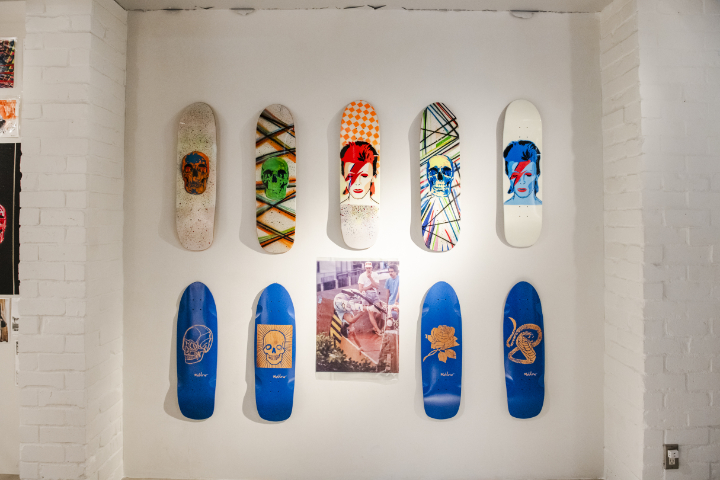
V: So that applies to all the things that you've done, not just the actual skateboarding, but also all the brands that you've been involved with, like Color, Prime, Vita, Gravis and so on. All these brands had a certain look and style.
M: The important thing is wanting to show the style and wanting to show things that look good. With the teams that I've built, or the videos that I've done, or the companies and the graphics that I've made, it's always been in that same realm. I want to do things that are in a positive light, more like a comradery, acceptance and non-judgment. And again, wanting people to have a good feeling. Because if people can leave from a demo, an art show or a skate session, and have that feeling of like, "Fuck, that was so sick," those things are what's important. Those are what stick with you forever.
V: You're a father now. How is life?
M: When I was younger, Johnee Kop was a big influence on me. He used to always have this thing where he was like, "I'm Peter Pan, I'll never grow old." That has always been a little thing in my brain. You know, being a skater and being rebellious, not conforming to normal society. I'm never gonna grow old as long as I ride a skateboard. And being blessed to be a part of skateboarding from such a young age, and being friends with my heroes and being able to have companies and brands, that's what kept me young. Now that I have a daughter, I have gained a whole new perspective on life. I'm starting again from the beginning. I want to be able to take my daughter skating, surfing, swimming and snorkeling and travel the world. I look at her and her future is so giant, you know? I need to stay even younger because I want to be able to be that for my daughter. I want to show her that she has the ability to do whatever she wants.
V: What are the plans or hopes for you?
M: The skateboarding and the art world is going through changes. So for me, it's like starting back from the ground again. Japan is bringing Gravis back and keeping it going. They love what I built and that's the way they want to continue the brand rather than take it into a different direction. So there might be opportunities with me there. And then also with RVCA Japan, I would love to be a part of their crew and support the Japanese market because growing up in Hawaii, Japan was a huge influence. The country is one of my favorite places to be, and it's where I feel most inspired.
Mark Oblow
@markoblow
Born in Hawaii in 1971. He began his career as a sponsored skater in the 1980s, working with numerous iconic brands that left their mark on skate history, including Color, Prime, Vita, and Gravis. Today, he continues to express his creativity as an artist through a variety of mediums.








